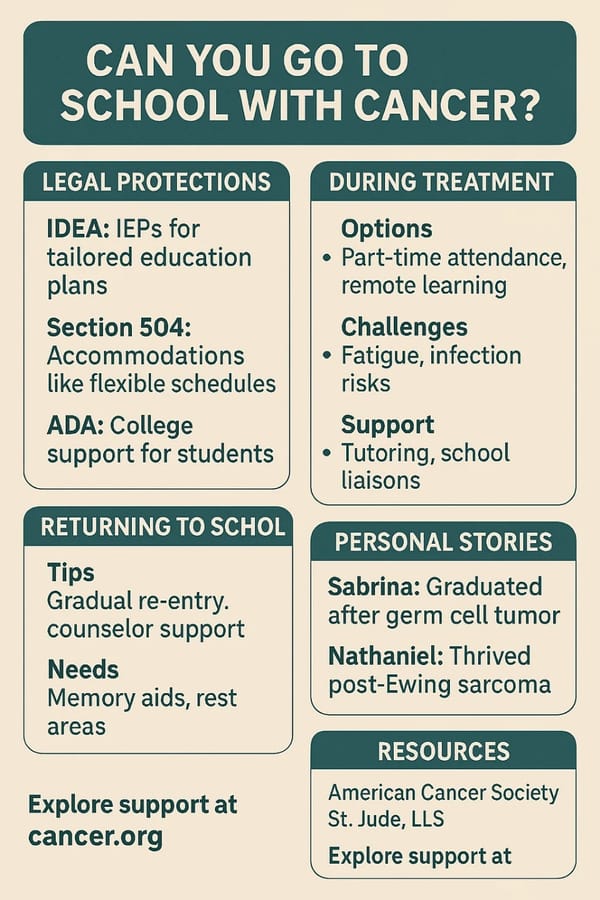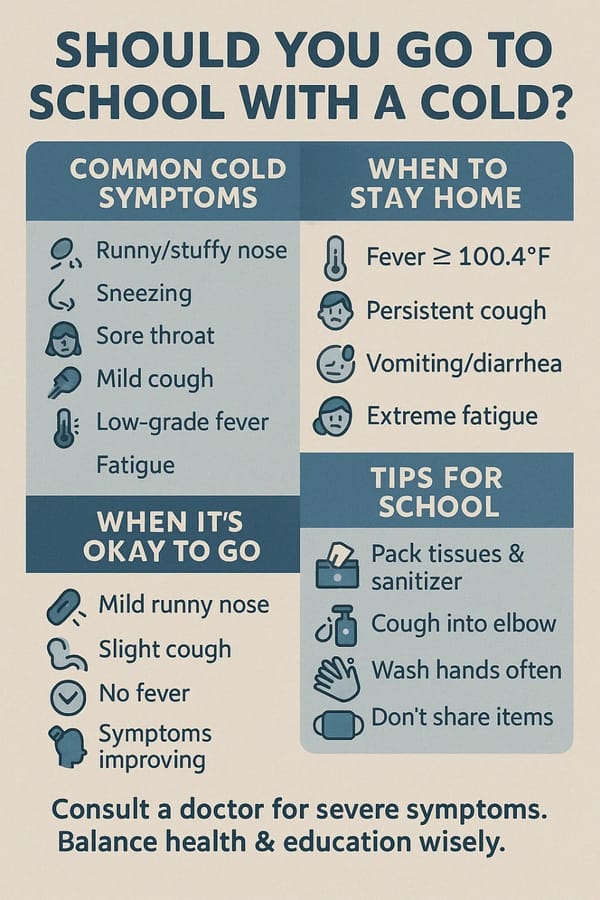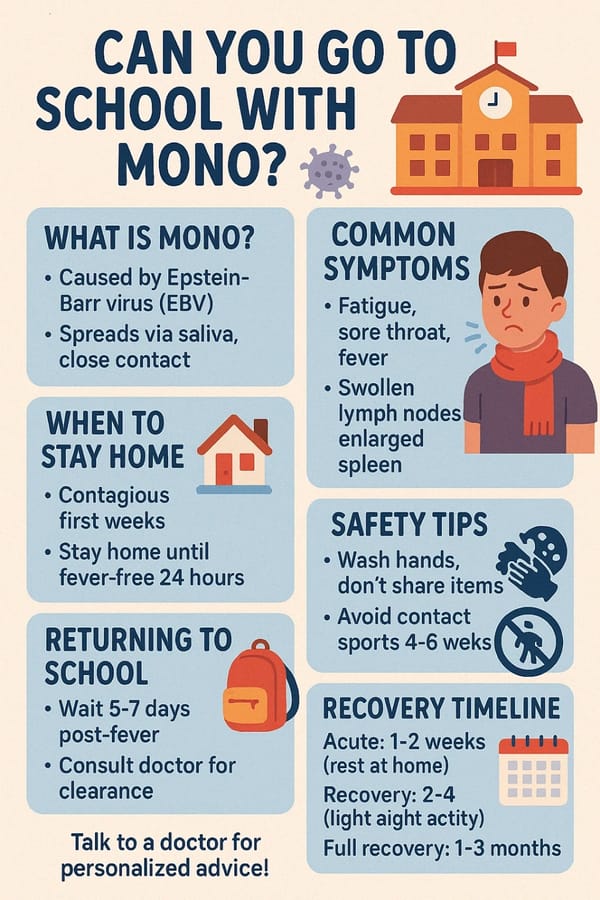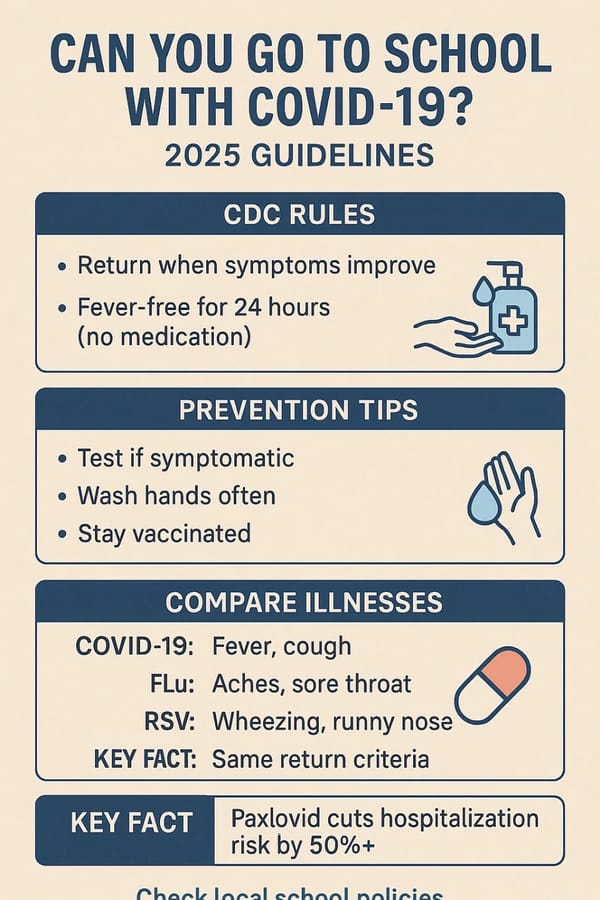Should I Send My Child to School with a 99°F Temperature? A Parent’s Guide
Parents face a challenging decision when their child has a mild temperature of 99°F about whether to send them to school. Is it a fever? Is it safe for them and others? As a parent myself I've struggled with this choice because I worry about making the right decision or needing to pick my child up from school due to a nurse call. This guide explores the question “Should I send my child to school with a fever of 99°F?” by examining medical definitions and health guidelines alongside school policies and practical tips to assist parents in making sound decisions. Parents who feel anxious about this topic will find clear guidance and practical steps in this article.
Understanding What 99°F Means for Your Child
Is 99°F Considered a Fever?
Parents often question whether their child has a fever when their forehead feels warm along with a thermometer reading of 99°F. According to the American Academy of Pediatrics, a child's fever is determined as a rectal temperature exceeding 100.4°F (38°C) while oral temperatures at 99.5°F or higher are usually categorized as febrile. The Mayo Clinic indicates that typical body temperature values range between 97°F and 99°F with an average of 98.6°F.
Your child's temperature at 99°F falls within or slightly exceeds the normal range so it doesn't qualify as a fever. However, every child’s baseline is unique. According to the University of Rochester Medical Center, slight temperature increases can reflect normal bodily reactions to factors like physical activity or heat rather than illness. I've observed my son's temperature reach 99°F following playtime at the park but return to normal once he rested.
Why Temperature Alone Isn’t Enough
A temperature of 99°F might not immediately seem alarming but represents just one component of the overall health assessment. According to the Johns Hopkins Medicine, your child’s behavior and symptoms should be considered alongside their temperature. Are they eating normally? Playing as usual? Children who show no symptoms and maintain good energy levels at 99°F do not raise any health concerns. The appearance of sluggishness or a sore throat complaint requires additional investigation.
Health Guidelines: Can Kids Go to School with 99°F?
What Experts Say About School Attendance
Health organizations offer clear instructions about homebound requirements for children while helping parents understand what to do when their child has a temperature of 99°F.
-
The Centers for Disease Control and Prevention (CDC) guidelines state that children should stay home if their temperature hits 100.4°F or above and must remain fever-free for a full 24-hour period without medicine before returning to school. The temperature of 99°F is considered safe for school attendance as long as there are no additional symptoms present.
-
The American Academy of Pediatrics allows children to go to school at temperatures under 100.4°F when they display no signs of sickness. A child who has a temperature of 99°F but displays normal behavior will probably be permitted to attend school.
-
The trusted healthcare provider FastMed advises that children with temperatures under 100.4°F can attend school if they show no signs of being unwell. The standard applies to children with a 99°F temperature as long as they continue to eat properly and behave normally.
According to these guidelines 99°F alone should not prevent a student from attending school but maintaining close attention to their health is important. You should monitor symptoms such as coughing or tiredness which may signal the onset of an illness.
When Behavior Matters More Than Numbers
My daughter’s thermometer showed 99.1°F one morning. She ran around full of energy for breakfast which allowed me to send her to school after ensuring she showed no additional illness signs. The day proceeded without any issues which confirmed that student behavior outweighs a slight fever. According to the Children’s Health, students with colds who do not have a fever should only stay home if their symptoms like persistent coughing interfere with learning. If your child displays normal behavior school attendance is appropriate at a temperature of 99°F.
Navigating School and Daycare Policies
Why School Rules Vary
School and daycare policies introduce complications despite medical guidelines providing reassurance. Certain educational institutions implement more rigorous fever cutoffs to protect public health by sending children home when their temperatures exceed 99°F or 99.5°F. For example, the Duke Health article demonstrates how schools enforce conservative rules due to misunderstandings about normal fever ranges that fall between 97°F and 99°F.
Variability in temperature policies becomes evident through parent discussions on platforms such as Reddit. A dad posted in a r/daddit thread about his annoyance when school sent his child home due to a 99.9°F temperature although the child felt perfectly healthy. Daycare workers on r/ECEProfessionals pointed out their 101.4°F threshold while acknowledging that certain parents request alerts starting at 99°F. Such stories highlight the importance of understanding your school’s specific fever policy.
Check Before You Go
You can prevent unforeseen complications by making a phone call to your school or daycare to verify their rules regarding fever. Staying home when temperatures go beyond 99°F is recommended even if medical advice disagrees because it aligns with your school's policy. Taking this step prevents unexpected school pickups and saves time.
When to Keep Your Child Home: Red Flags to Watch
Beyond the Thermometer
Your child should stay home when they display certain symptoms even though their temperature is 99°F. The CDC lists red flags like:
- Fever with a new rash
- Vomiting more than twice in 24 hours
- Diarrhea causing accidents
- Worsening respiratory symptoms
The Healthline guide alerts parents that returning sick kids to school early can worsen illnesses and prolong their recovery time. When your child shows a 99°F temperature with symptoms like a runny nose or sore throat and feels unusually tired, they should stay home to rest. I use changes in appetite to detect problems since my child will skip their favorite snack when they feel sick.
Table: When to Stay Home vs. Go to School
| Symptom | Stay Home? | Go to School? |
|---|---|---|
| Temperature 99°F, no symptoms | No | Yes |
| Temperature 99°F + cough | Yes | No |
| Temperature 100.4°F+ | Yes | No |
| Normal temp, severe cold | Yes | No |
Source: Adapted from CDC and Children’s Health
Managing a 99°F Temperature at Home
How Common Are Fevers?
Fevers are a childhood staple. According to research available on NCBI Bookshelf, the majority of fevers result from harmless viral infections while only 1 in 100 cases indicate serious health problems. The NHS website specifies that viral infections lead to most fevers in children which typically clear up in a few days.
Managing 99°F temperatures requires simple steps because it does not represent a true fever. According to the OSF HealthCare, any temperature below 99°F does not indicate a fever while low-grade fevers begin at 99.5°F when measured orally. Focus on hydration, offering water or electrolyte drinks, as Kinsa Health recommends monitoring hydration because even minor temperature increases can trigger fluid loss.
Medication: Necessary or Not?
Children usually do not require fever reducers such as acetaminophen or ibuprofen at 99°F unless they exhibit signs of discomfort. According to the Children’s Hospital of Philadelphia, these medications alleviate pain but do not expedite the healing process. Always calculate medication doses based on body weight and seek medical advice for children below 2 years old according to Children’s Healthcare of Atlanta.
Practical Tips for Parents
This guide shows you how to manage a 99°F temperature with confidence.
- Accurate Readings: For accurate temperature readings in children use a digital thermometer with an oral method for older kids and rectal method for infants according to Boston Children’s Hospital.
- Watch Behavior: Monitor for shifts in energy levels, appetite changes, or mood swings as these signs can indicate illness.
- Talk to School: To understand school policies on fevers you should contact the nurse based on the recommendations from AdventHealth.
- Plan Ahead: Schedule flexible work arrangements to be able to stay home with your child when needed following guidelines from Healthline.
I’ve learned to trust my gut. I made the decision to keep my son at home because he had a 99°F temperature along with a slight cough. A day of rest stopped the illness in its tracks, proving a little caution can go a long way.
When to Call a Doctor
While 99°F is rarely concerning, some situations need medical attention:
- Infants Under 3 Months: Any fever requires immediate care, per the NHS.
- Rising Temperatures: If it climbs above 100.4°F with symptoms like rash or headache, see a doctor, says Johns Hopkins Medicine.
- Persistent Issues: Ongoing or recurring temperatures warrant a checkup, notes Boston Children’s Hospital.
If something feels off, trust your instincts and consult a pediatrician, as the University of Rochester Medical Center encourages.
Conclusion: Making the Right Call
Deciding whether to send your child to school with a 99°F temperature comes down to a few key takeaways. Experts from the CDC and FastMed confirm that 99°F isn’t a fever and is usually fine for school if your child is symptom-free and acting normal. But school policies can vary—some may require staying home for temperatures above 99°F, as seen in Reddit discussions. Always check for symptoms like coughing or fatigue, and prioritize rest if you spot them.
Fevers are a common, often harmless part of childhood, as the NCBI Bookshelf reassures. By staying informed, verifying school rules, and listening to your instincts, you can make confident decisions that keep your child healthy and learning. Have you faced this dilemma? Share your experience below or reach out to your pediatrician for tailored advice.






